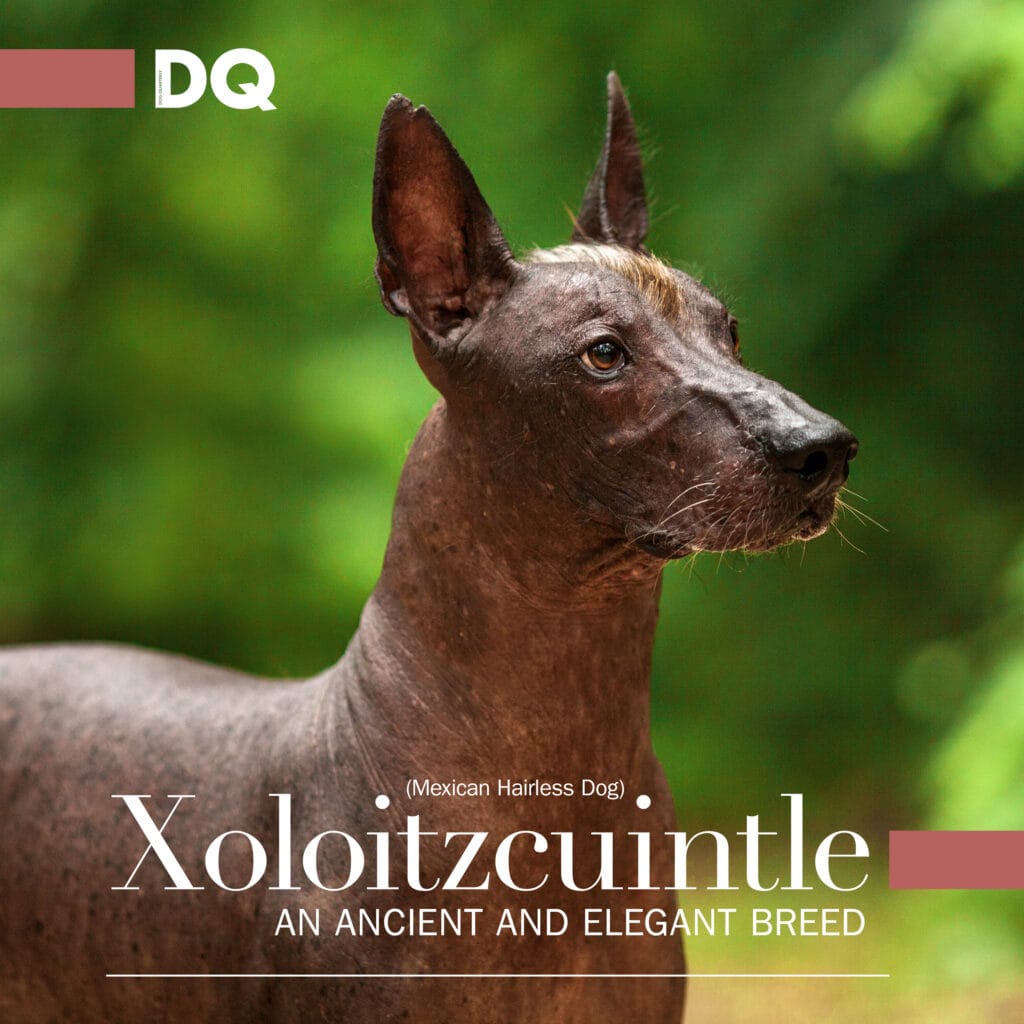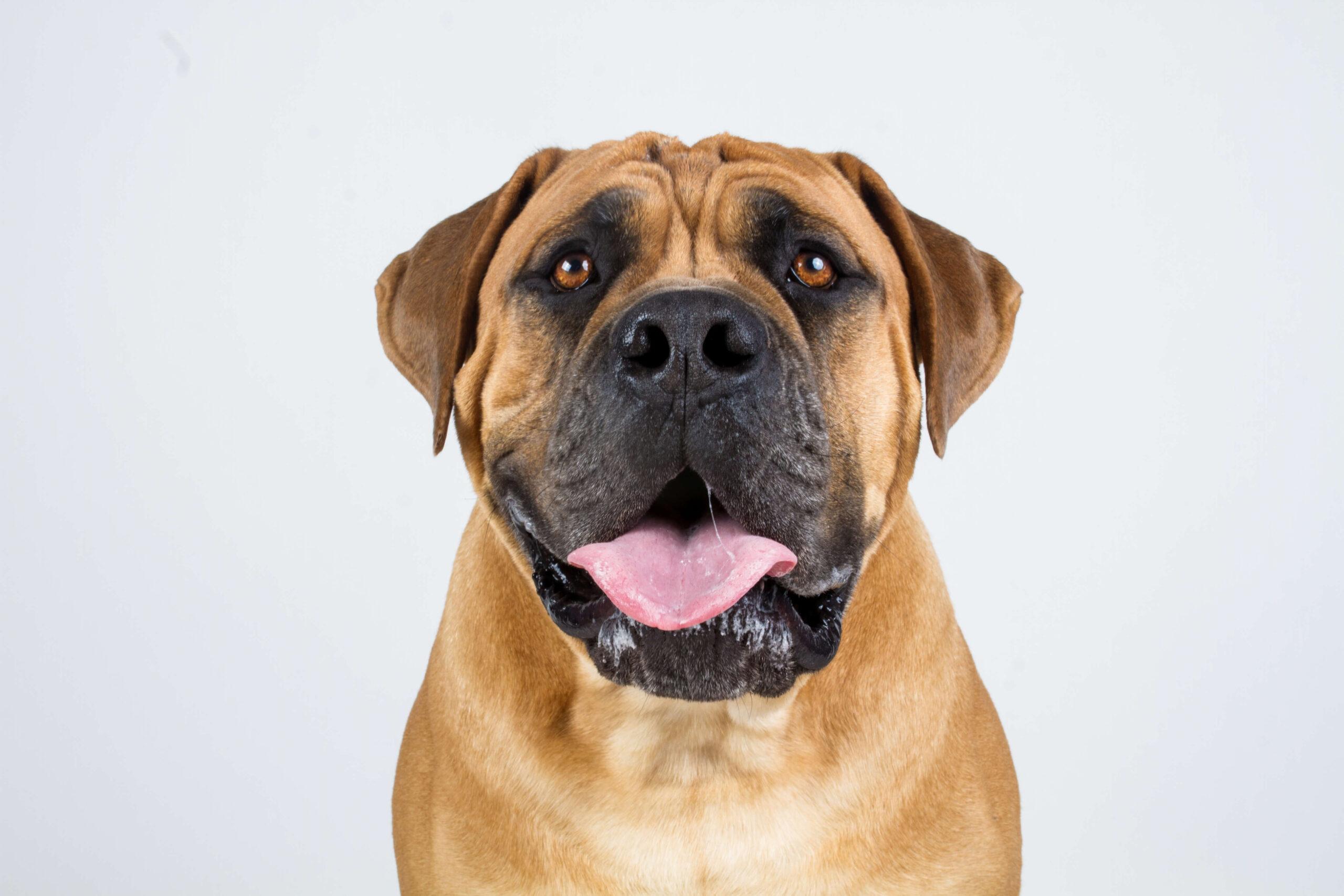An ancient and elegant breed
Pronounced ‘show-low-eats-queen-tlee’—or affectionately called the ‘Xolo’—this ancient breed hails from Mexico and boasts a legacy stretching back over 3000 years. Revered by the Aztecs, Toltecs, and Maya, the Xoloitzcuintle was seen as a spiritual guide and guardian of the afterlife. Today, it is celebrated for its striking looks, intelligence, and deep devotion to its humans.

History
The Xoloitzcuintle is not just one of the world’s oldest dog breeds—it is a living link to Mesoamerican civilisation. Archaeological evidence indicates that Xolos have been present in Mexico for over 3000 years, making them a sacred and enduring part of the country’s cultural heritage.
The name Xoloitzcuintle comes from two Nahuatl words: Xolotl, the Aztec god of fire and lightning, and itzcuintli, meaning dog. According to legend, the god Xolotl created the Xoloitzcuintle from a sliver of the Bone of Life and gave the breed to humans to guard them and guide their souls through the underworld after death.
For the Aztecs, Maya, Toltecs, and other Indigenous peoples of ancient Mexico, the Xolo wasn’t just a pet—it was a spiritual being. Xolos were often buried alongside their owners to help guide them safely into the afterlife. In some traditions, they were believed to ward off evil spirits and illness.
Beyond their spiritual significance, Xolos served practical roles too. Their warm bodies were used as natural heating pads to relieve aches and pains, and their keen senses made them excellent watchdogs.
Despite their deep cultural roots, Xolos nearly disappeared after the Spanish conquest. European colonisers dismissed Indigenous beliefs, and the breed was no longer revered. For centuries, Xolos survived only in remote rural communities where they were quietly preserved by locals.
It wasn’t until the 20th century that the breed began its formal comeback. In the 1950s, a team of Mexican dog enthusiasts, supported by the Mexican Kennel Club, sought out the few remaining pure Xolos and began an official breeding programme. Their efforts not only saved the breed from extinction but also secured its recognition by the Fédération Cynologique Internationale (FCI) and later the American Kennel Club (AKC).
Today, the Xoloitzcuintle is celebrated as Mexico’s national dog. It appears in art, folklore, and modern film and television.

Did you know?
Xolos are depicted in some of Mexican artist Frida Kahlo’ paintings and Diego Rivera’s large murals, feature numerous Xolos.

Appearance
Body
Xolos have a lean, well-proportioned frame that combines strength with refinement. Their bodies are slightly longer than they are tall, with a level topline and a deep, roomy chest. The ribs are well-sprung, tapering into a defined tuck-up, giving the breed a fit, almost sculpted appearance.
Their long, slightly arched neck flows into muscular shoulders and strong, straight forelegs. The hindquarters are powerful, built for propulsion, with moderately angulated stifles and hocks that are well let down. Xolos move with a smooth, effortless stride that’s light but purposeful.

Head
The Xolo’s head is a hallmark of the breed—clean, wedge-shaped, and expressive. The skull is broad and flat, tapering to a slightly defined stop. Their almond-shaped eyes, ranging in shades from dark brown to amber (depending on coat colour), give them an intelligent and soulful look.
Their ears are large, upright, and bat-like—always alert and mobile, adding to their expressive character. The muzzle is long and narrow, with tight-fitting lips and a black or self-coloured nose.

Skin and coat
The hairless variety is the most iconic, with smooth, tough, yet soft skin that often feels warm to the touch. Some individuals may have tufts of coarse hair on the forehead, tail tip, or toes—called the ‘crest, plume, and socks.’
Though they lack fur, their skin comes in an array of solid or dark colours including:
- Black
- Slate grey
- Bronze
- Dark brown
- Liver
- Occasionally, with small white markings
Hairless Xolos require sun protection and regular bathing to prevent clogged pores and irritation—but unlike coated breeds, they don’t attract fleas or shed hair.
The coated variety is less known but just as correct in the breed standard. These dogs have a short, flat coat that lies close to the body. Coated Xolos share all other breed traits, and their coat may be any solid colour found in the hairless variety.

Tail and feet
The tail is long, thin, and tapered—carried low and curved slightly when relaxed, or in a gentle arc when alert. Their feet are hare-shaped with well-arched toes and thick pads, making them nimble and sure-footed.
Size
Xolos come in three distinct sizes, making the breed accessible for many types of homes:
- Toy: 23–36cm and 2–7kg
- Miniature: 36–46cm and 7–14kg
- Standard: 46–60cm and 14–25kg
Each size maintains the same overall conformation, temperament, and elegance, but with a different physical presence.

Temperament
Xolos are intelligent, calm, and highly affectionate with their families. They tend to form strong bonds with their people and are known to be excellent watchdogs—alert but not typically yappy. Early socialisation is essential, as they can be reserved with strangers.
Exercise needs
Despite their calm indoor nature, Xolos benefit from regular exercise and mental stimulation. Daily walks and interactive play keep them content. They thrive in homes where they can be actively involved in family life, rather than being left alone for long stretches.

Training
Highly trainable, they excel in obedience and even agility when given the opportunity.
Health and care
Xolos are a generally healthy breed, but their lack of hair makes skincare essential. Hairless Xolos need protection from extreme sun and cold—think dog-friendly sunscreen and cosy sweaters. Dental hygiene is also important, as hairless varieties often have fewer teeth than coated ones.

Did you know?
Xolos are often recommended for allergy sufferers thanks to their hairlessness and low dander levels—though no dog is completely hypoallergenic.

Is the Xoloitzcuintle right for you?
If you’re looking for a unique, intelligent, and devoted companion with ancient roots and minimal shedding, the Xoloitzcuintle may be your perfect match. Their striking looks and soulful eyes are matched only by their loyal hearts.
Fast fact
A Xolo named Dante starred in Disney-Pixar’s Coco, helping bring awareness of the breed to a global audience.



